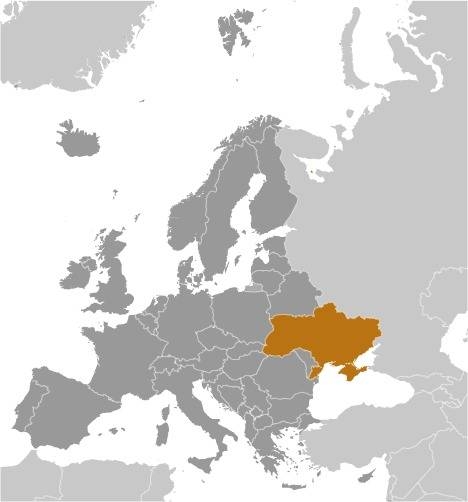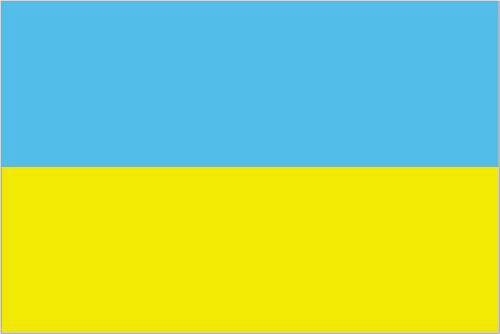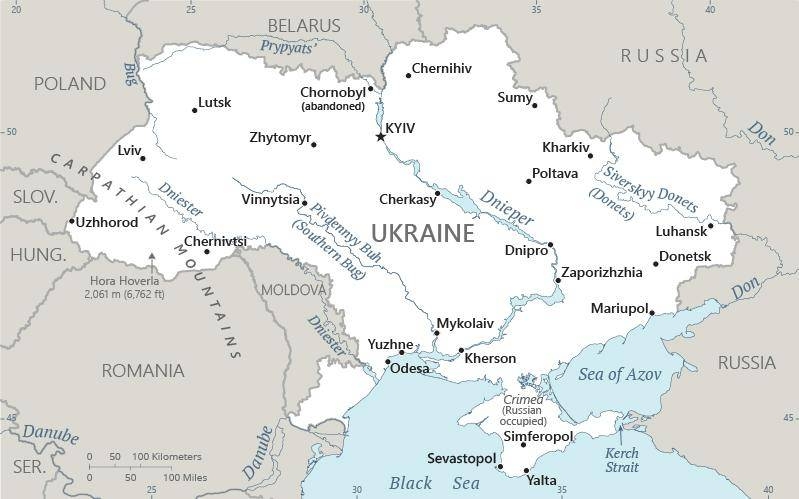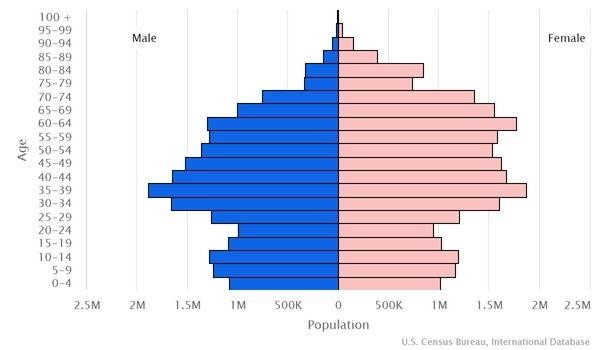Country Summary




Introduction
Background
Ukraine was the center of the first eastern Slavic state, Kyivan Rus, which during the 10th and 11th centuries was the largest and most powerful state in Europe. Although Ukraine achieved independence in 1991 with the dissolution of the USSR, democracy and prosperity remained elusive. The legacy of state control stalled efforts at economic reform, privatization, and civil liberties. Ukraine is fiercely resisting the 2022 Russian invasion, which has destroyed infrastructure and caused a humanitarian crisis.
Geography
Area
total: 603,550 sq km
land: 579,330 sq km
water: 24,220 sq km
Climate
temperate continental; Mediterranean only on the southern Crimean coast; precipitation disproportionately distributed, highest in west and north, lesser in east and southeast; winters vary from cool along the Black Sea to cold farther inland; warm summers across the greater part of the country, hot in the south
Natural resources
iron ore, coal, manganese, natural gas, oil, salt, sulfur, graphite, titanium, magnesium, kaolin, nickel, mercury, timber, arable land
People and Society
Population
43,528,136 (2022 est.)
Ethnic groups
Ukrainian 77.8%, Russian 17.3%, Belarusian 0.6%, Moldovan 0.5%, Crimean Tatar 0.5%, Bulgarian 0.4%, Hungarian 0.3%, Romanian 0.3%, Polish 0.3%, Jewish 0.2%, other 1.8% (2001 est.)
Languages
Ukrainian (official) 67.5%, Russian (regional language) 29.6%, other (includes small Crimean Tatar-, Moldovan/Romanian-, and Hungarian-speaking minorities) 2.9% (2001 est.); note - in February 2018, the Constitutional Court ruled that 2012 language legislation entitling a language spoken by at least 10% of an oblast's population to be given the status of "regional language" - allowing for its use in courts, schools, and other government institutions - was unconstitutional, thus making the law invalid; Ukrainian remains the country's only official nationwide language
Religions
Orthodox (includes the Orthodox Church of Ukraine (OCU), Ukrainian Autocephalous Orthodox Church (UAOC), and the Ukrainian Orthodox - Moscow Patriarchate (UOC-MP)), Ukrainian Greek Catholic, Roman Catholic, Protestant, Muslim, Jewish (2013 est.)
Population growth rate
-0.5% (2022 est.)
Government
Government type
semi-presidential republic
Capital
name: Kyiv (Kiev)
Executive branch
chief of state: President Volodymyr ZELENSKYY (since 20 May 2019)
head of government: Prime Minister Denys SHMYHAL (since 4 March 2020)
Legislative branch
description: unicameral Supreme Council or Verkhovna Rada (450 seats; 225 members directly elected in single-seat constituencies by simple majority vote and 225 directly elected in a single nationwide constituency by closed, party-list proportional representation vote; members serve 5-year terms)
Economy
Economic overview
lower middle-income non-EU Eastern European economy; major wheat producer; industrial and energy exporter; big fiscal reallocations toward defenses; seeking $2 billion in monthly US wartime aid to combat Russia; mass war-related emigration and homelessness
Real GDP (purchasing power parity)
$516.68 billion (2020 est.)
Real GDP per capita
$12,400 (2020 est.)
Agricultural products
maize, wheat, potatoes, sunflower seed, sugar beet, milk, barley, soybeans, rapeseed, tomatoes
Industries
coal, electric power, ferrous and nonferrous metals, machinery and transport equipment, chemicals, food processing
Exports
$60.67 billion (2020 est.)
Exports - partners
Russia 9%, China 8%, Germany 6%, Poland 6%, Italy 5%, Turkey 5% (2019)
Exports - commodities
corn, sunflower seed oils, iron and iron products, wheat, insulated wiring, rapeseed (2019)
Imports
$62.46 billion (2020 est.)
Imports - partners
China 13%, Russia 12%, Germany 10%, Poland 9%, Belarus 7% (2019)
Imports - commodities
refined petroleum, cars, packaged medicines, coal, natural gas (2019)
Exchange rates
hryvnia (UAH) per US dollar -
Page last updated: Wednesday, June 15, 2022
